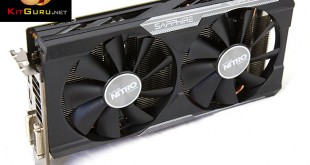
For many, the R9 Fury X and GTX980Ti are fantasy solutions – dream cards most of us will never be able to afford. What if you only have £200 to spend and need a new graphics card that can handle resolutions up to 1440p? Today we look at the latest Sapphire R9 380 Nitro which is priced to go head to head against Nvidia's GTX960.
The matte black finished Nitro series is new for Sapphire – and KitGuru had very positive experiences with their R9 390 Nitro 8GB back in July. The R9 380 is a lower cost solution aimed at a much wider enthusiast audience – after all £200 is seen as an affordable sweet spot for many gamers.
The Sapphire R9 Nitro 4GB we are analysing today is priced at £179.99 inc vat at Overclockers UK.
| GPU | R9 390X | R9 290X | R9 390 | R9 290 | R9 380 | R9 285 |
| Launch | June 2015 | Oct 2013 | June 2015 | Nov 2013 | June 2015 | Sep 2014 |
| DX Support | 12 | 12 | 12 | 12 | 12 | 12 |
| Process (nm) | 28 | 28 | 28 | 28 | 28 | 28 |
| Processors | 2816 | 2816 | 2560 | 2560 | 1792 | 1792 |
| Texture Units | 176 | 176 | 160 | 160 | 112 | 112 |
| ROP’s | 64 | 64 | 64 | 64 | 32 | 32 |
| Boost CPU Clock | 1050 | 1000 | 1000 | 947 | 970 | 918 |
| Peak GFLOPS (SP) | 5914 | 5632 | 5120 | 4849 | 3476 | 3290 |
| Memory Clock | 6000 | 5000 | 6000 | 5000 | 5700 | 5500 |
| Memory Bus (bits) | 512 | 512 | 512 | 512 | 256 | 256 |
| Max Bandwidth (GB/s) | 384 | 320 | 384 | 320 | 182.4 | 176 |
| Memory Size (MB) | 8192 | 4096 | 8192 | 4096 | 4096 | 2048 |
| Transistors (mn) | 6200 | 6200 | 6200 | 6200 | 5000 | 5000 |
| TDP (watts) | 275 | 290 | 275 | 275 | 190 | 190 |
The Antigua Pro (formerly Tonga) core on the Sapphire R9 380 Nitro is clocked at 985mhz and the 4GB of GDDR5 memory is running at 1,450MHz (5.8Gbps effective). Sapphire have opted for minor increases on both core and memory clocks, compared against the reference design.
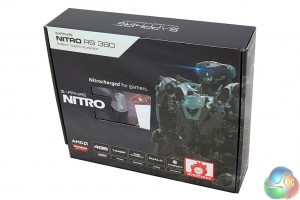
The Sapphire box artwork features another futuristic robotic render with a little window to showcase the Nitro sticker on one of the fans.
The rear of the box highlights the Nitro cooler in the form of a breakdown diagram.
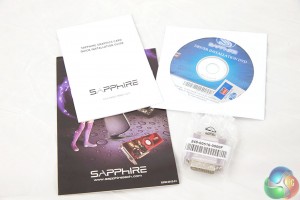
The bundle contains a video adapter, literature, and a software/driver disc. We always advise people to get the latest driver direct from AMD's website as the driver on the optical disc may be a couple of revisions older.
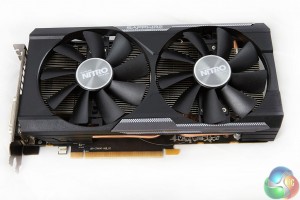
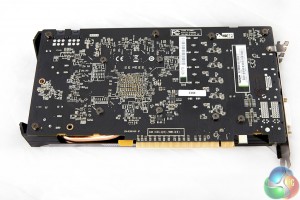
Sapphire's Nitro cooler is very understated which will appeal to the enthusiast audience who have an inherent adverse reaction to flashing lights and bright colours. The PCB is black, to match the matte finish of the cooler.
The card measures in at almost 240mm, meaning that compatibility and installation issues are unlikely.
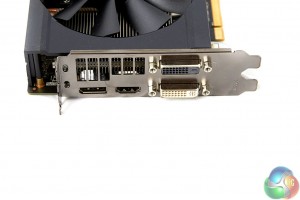
The card is equipped with two DVI ports, one DVI-I and one DVI-D. There is a full sized HDMI 1.4 and DisplayPort underneath an exhaust vent.
There is no HDMI 2.0 on this card, although that is unlikely to annoy HTPC gamers with a 4K TV as the R9 380 is not strong enough to push playable frame rates at a 3840×2160 resolution. It is, however, an annoyance to users who want to occasionally connect their system to their big 4K TV for high-resolution media consumption from the likes of Netflix.
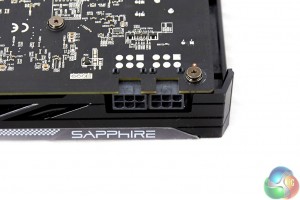
The card takes power from two six pin PCIe power connectors.
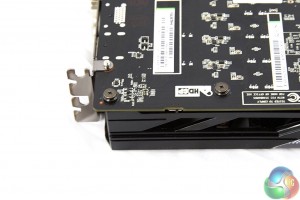
There are no crossfire connectors on the R9 380 Nitro – as this is based on the R9 285, it has bridgeless Crossfire support. Simply plug in two of these cards into a Crossfire capable motherboard and Catalyst Control Center will enable Crossfire options. TrueAudio is also fully supported.
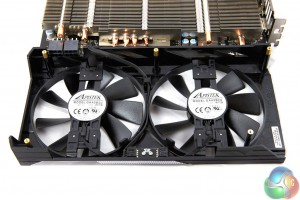
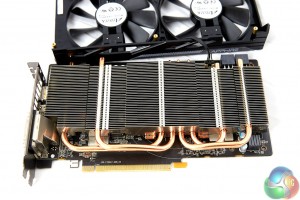
The plastic shroud can be easily removed showing the large heatsink underneath in all its glory. It is a fairly chunky cooler.
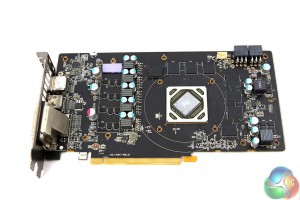
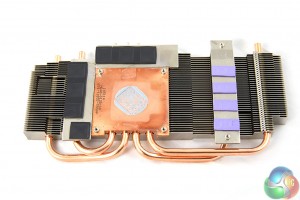
The four thick copper heatpipes run directly into a big copper base which cools the Antigua (Tonga) core – these heatpipes run into aluminium fins on either side of the GPU core to quickly disperse the heat. Memory and VRMs are actively cooled by the heatsink as well.
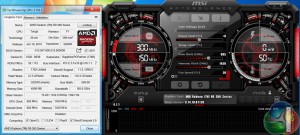
GPU-Z depicts an overview of the Sapphire R9 380 Nitro – which is basically the same as the last generation R9 285, with higher core and memory clocks. AMD's Antigua Pro (Tonga) core is built on the 28nm process. There are 32 ROP's, 112 Texture units and 1792 Stream Processors. The 4GB of GDDR5 memory runs at 1,450mhz (5.8Gbps effective) and is connected via a 256 bit memory interface. The core is running at 985mhz – slightly faster than AMD's reference clocks.
For the review today we are using the data gathered from our earlier testing using AMD's Catalyst 15.7.1 drivers. The Sapphire R9 380 card's 1440P performance is gathered using the Catalyst 15.201.1102 driver that was provided to us for the launch of the R9 Nano. We measured no perceivable performance difference between the different drivers.
Our testing uses the 1920×1080 resolution as many people buying a sub-£200 graphics card will be gaming on a 1080P monitor. 2560×1440 testing is also included to see how the R9 380 GPU and its 4GB GDDR5 frame buffer cope.
We test using the AOC U2868PQU 4K monitor that scored highly in our review that can be found HERE. AOC's 28″ offering is one of the most affordable 4K monitors on the market and makes the realms of 4K gaming more accessible to a wider audience. It also allows us to test comfortably at the 1920×1080 and 2560×1440 resolutions.
Test System
- Processor: Intel Core i7 5960X ES (4.4GHz OC).
- Memory: 16GB (4x 4GB) Corsair Vengeance LPX 3200MHz DDR4.
- Motherboard: Asus X99-Deluxe.
- System Drive: 500GB Samsung 840.
- CPU Cooler: Corsair H100i.
- Case: NZXT Phantom 630.
- Power Supply: Seasonic Platinum 1000W.
- Operating System: Windows 7 Professional with SP1 64-bit.
Comparison Graphics cards:
- Palit GTX 750 Ti StormX Dual 2GB (ForceWare 355.65)
- Asus GTX 950 STRIX DC2 OC 2GB (ForceWare 355.65)
- Palit GTX 950 StormX Dual 2GB (ForceWare 355.65)
- Palit GTX 960 Super JetStream 2GB (ForceWare 355.65)
- AMD R9 Nano (Catalyst 15.201.1102 – R9 Nano launch driver)
- Asus R9 390X STRIX DC3 OC (Catalyst 15.201.1102 – R9 Nano launch driver)
- Sapphire R9 380 ITX Compact (Catalyst 15.201.1102 – R9 Nano launch driver)
- Asus GTX 980 STRIX OC (ForceWare 355.82)
- Asus GTX 970 DCU Mini (ForceWare 355.82)
Software:
Unigine Heaven Benchmark
3DMark
Fraps
Steam Client
MSI Afterburner
TechPowerUp GPU-Z
Games:
Battlefield 4
Bioshock Infinite
Grand Theft Auto V
Metro: Last Light
Middle Earth: Shadow of Mordor
Tomb Raider
Game descriptions edited with courtesy from Wikipedia.
3DMark is an essential tool used by millions of gamers, hundreds of hardware review sites and many of the world’s leading manufacturers to measure PC gaming performance.
Futuremark say “Use it to test your PC’s limits and measure the impact of overclocking and tweaking your system. Search our massive results database and see how your PC compares or just admire the graphics and wonder why all PC games don’t look this good.
To get more out of your PC, put 3DMark in your PC.”
The Sapphire R9 380 Nitro claims top position in the synthetic benchmark, against cards such as the Palit GTX960 Super JetStream.
Unigine provides an interesting way to test hardware. It can be easily adapted to various projects due to its elaborated software design and flexible toolset. A lot of their customers claim that they have never seen such extremely-effective code, which is so easy to understand.
Heaven Benchmark is a DirectX 11 GPU benchmark based on advanced Unigine engine from Unigine Corp. It reveals the enchanting magic of floating islands with a tiny village hidden in the cloudy skies. Interactive mode provides emerging experience of exploring the intricate world of steampunk. Efficient and well-architected framework makes Unigine highly scalable:
- Multiple API (DirectX 9 / DirectX 10 / DirectX 11 / OpenGL) render
- Cross-platform: MS Windows (XP, Vista, Windows 7) / Linux
- Full support of 32bit and 64bit systems
- Multicore CPU support
- Little / big endian support (ready for game consoles)
- Powerful C++ API
- Comprehensive performance profiling system
- Flexible XML-based data structures
We set Quality to ‘Ultra', Tessellation to ‘Normal', Anti Aliasing to 4x and the resolution to 1920×1080 (1080p). For 2560×1440 testing, we set Quality to ‘Ultra’, Tessellation to ‘Normal’, and Anti Aliasing to 2x.
Unigine is a very tessellation heavy benchmark test and it demands a lot of the partnering hardware. The R9 380 Nitro delivers good results at 1080p, although our settings at 1440p prove a little too demanding.
Battlefield 4 ’s single-player Campaign takes place in 2020, six years after the events of its predecessor. Tensions between Russia and the United States have been running at a record high, due to a conflict between the two countries that has been running for the last six years. (Wikipedia).
We opted for Battlefield 4's High IQ preset and did not apply AA in order to make the 60 FPS target obtainable for these cards at 1080P. For 2560×1440 testing, the eye-candy is bumped up to Battlefield 4's Ultra preset as gamers spending more on a monitor are likely to want higher image quality levels.
Our frame rates are recorded using a section of the game.
1080p performance is excellent and frame rates are held in excess of 60 at all times. In real world terms this translates into a perfectly smooth gaming experience.
At 1440p the demand placed is much higher and we can see the R9 380 is struggling to maintain enough bandwidth to keep the engine running at playable frame rates. The GTX960 is very evenly matched, although minimum frame rates are a little improved.
Set in 1912, in Bioshock Infinite, players assume the role of former Pinkerton agent Booker DeWitt, sent to the flying city of Columbia on a rescue mission. His target? Elizabeth, imprisoned since childhood.
Bioshock Infinite is set to its highest image quality settings at both resolutions. We test a section of the game. In our previous graphics card reviews we have removed the game’s minimum FPS reading as our current test method seems to be imposing an unjustified penalty against AMD cards so we are looking into this issue. The same charting process is conducted for this review.
The GTX960 and R9 380 Nitro are neck and neck at 1080p with less than one frame per second between them. At 1440p the R9 380 pulls away a little, although the average frame rates are still very close.
Grand Theft Auto V is an action-adventure game played from either a first-person or third-person view. Players complete missions—linear scenarios with set objectives—to progress through the story.
Outside of missions, players can freely roam the open world. Composed of the San Andreas open countryside area and the fictional city of Los Santos, the world of Grand Theft Auto V is much larger in area than earlier entries in the series.
The world may be fully explored from the beginning of the game without restrictions, although story progress unlocks more gameplay content. (Wikipedia).
For 1920×1080 testing we set all of GTA V's primary settings to the Very High level (ambient occlusion was High). MSAA was turned off as it deals a harsh blow to the graphics cards' frame rates. We saw the game use over 3GB of VRAM on a 4GB graphics card, however squeezing the files into a 2GB frame buffer did not incur a noticeable performance penalty. At 2560×1440, the game's highest image quality settings are used (no AA) to correspond with our 1440P results database.
The built-in benchmark is used to gather performance data.
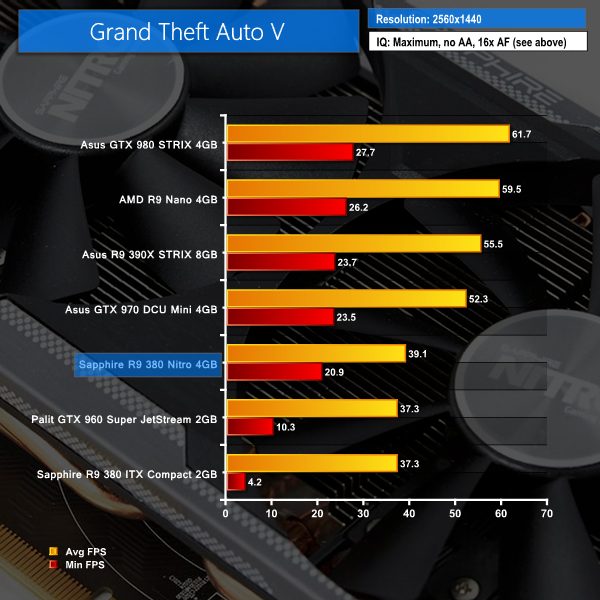
These results are particularly interesting. The GTX960 holds a slightly higher average frame rate than the R9 380 at 1080p although the Sapphire card maintains a higher minimum frame rate. This is directly related to the R9 380's 4GB frame buffer and the 2GB capacity for our comparison GTX960.
At 1440p the GTX960 is clearly struggling with the engine and its VRAM requirements – the average frame rate is close to the R9 380 Nitro, but the huge minimum frame rate differential would indicate bandwidth issues at the higher resolution.
Metro: Last Light takes place one year after the events of Metro 2033, proceeding from the ending where Artyom chose to call down the missile strike on the Dark Ones. The Rangers have since occupied the D6 military facility, with Artyom having become an official member of the group. Khan, the nomad mystic, arrives at D6 to inform Artyom and the Rangers that a single Dark One survived the missile strike.
4A Games’ proprietary 4A Engine is capable of rendering breathtaking vistas, such as those showing the ruined remnants of Moscow, as well as immersive indoor areas that play with light and shadow, creating hauntingly beautiful scenes akin to those from modern-day photos of Pripyat’s abandoned factories and schools.
At 1920×1080 we opted for the High quality preset in the ever-demanding Metro: Last Light benchmark. AA was kept off, AF was applied as 16x, and tessellation was set to normal. We opted for the Very High setting for 1440P testing. AA was kept off, AF was applied as 16x, and tessellation was set to normal.
The minimum FPS readings do not highlight anything more important than very occasional drops in one of the three runs.
Nvidia hardware always scores well in Metro: Last Light and we can see the GTX960 outperforms the R9 380 at both 1080p and 1440p.
In Middle-earth: Shadow of Mordor, the player plays as a ranger by the name of Talion who has wraith-like abilities.In this open world video game, players have the freedom to pursue side quests and roam around the world.
We used Shadow of Mordor's Very High image quality preset for both resolutions and tested using the built-in benchmark.
The R9 380 Nitro performs exceptionally well at both 1080p and 1440p, clearly some distance ahead of the GTX960. That said, at 1080p the real world differences between the GTX960 and R9 380 would be indistinguishable due to the minimum frame rates – which are almost identical.
Tomb Raider received much acclaim from critics, who praised the graphics, the gameplay and Camilla Luddington’s performance as Lara with many critics agreeing that the game is a solid and much needed reboot of the franchise. Much criticism went to the addition of the multiplayer which many felt was unnecessary. Tomb Raider went on to sell one million copies in forty-eight hours of its release, and has sold 3.4 million copies worldwide so far. (Wikipedia).
We test using the Ultimate quality profile for both resolutions. The in-game benchmark is used.
Tomb Raider runs well on both Nvidia and AMD hardware. The R9 380 and GTX960 are very evenly matched with this game engine – holding very similar frame rates at both 1080p and 1440p.
The tests were performed in a controlled room with temperatures maintained at a constant 25°C – a comfortable summer environment for the majority of people reading this. Idle temperatures were measured after sitting at the desktop for 15 minutes. Gaming measurements were acquired by repeating the GTA V benchmark for 15 minutes and taking the stabilised reading. All fan settings were left on automatic.
Sapphire's effective twin-fan cooler does a good job at cooling the R9 380 GPU while gaming. Under the heavy load of GTA V, the GPU temperature remained well below the 70C mark, which is perfectly safe for long-term usage.
AMD's R9 380 GPU core is not very well optimised for operation with a 0dB fan mode, hence the high idle temperature level.
There is no backplate on the Sapphire R9 380 Nitro 4GB graphics card, meaning that areas of the rear PCB can get hot. A hot spot of almost 75C was recorded behind the VRM components, implying that a low-cost backplate implementation may have been a useful addition.
We measure graphics card acoustic emissions in our test system while all other fans are disabled, leaving our Corsair H100i's pump unit as the sole noise-producing component.
We measure at a distance of around 1m from the front of the test system and around 1m from the ground. The positioning of a graphics card's AIO liquid cooler (if the card has one) will have a noticeable effect on the recorded sound level and the system's perceived loudness.
Unfortunately the city-centre positioning of our test location creates a relatively high ambient noise level of a little over 40 dBA. This has an effect on the perceived loudness of each card at the lower end of the noise scale.
KitGuru noise guide
10dBA – Normal Breathing/Rustling Leaves
20-25dBA – Whisper
30dBA – High Quality Computer fan
40dBA – A Bubbling Brook, or a Refrigerator
50dBA – Normal Conversation
60dBA – Laughter
70dBA – Vacuum Cleaner or Hairdryer
80dBA – City Traffic or a Garbage Disposal
90dBA – Motorcycle or Lawnmower
100dBA – MP3 player at maximum output
110dBA – Orchestra
120dBA – Front row rock concert/Jet Engine
130dBA – Threshold of Pain
140dBA – Military Jet takeoff/Gunshot (close range)
160dBA – Instant Perforation of eardrum
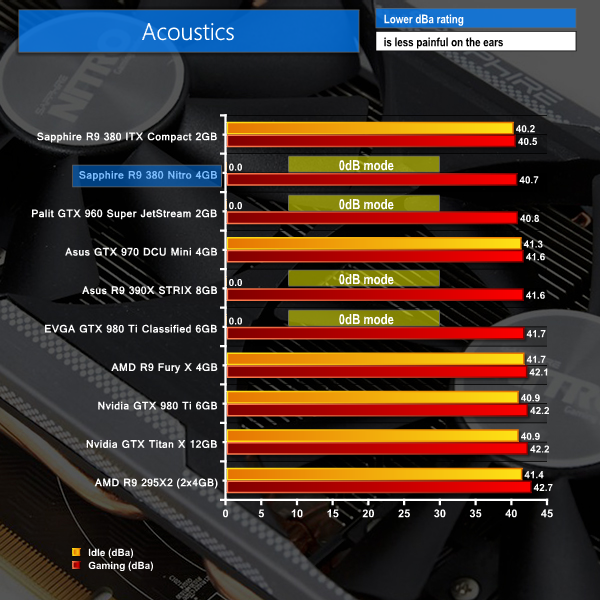
Sapphire's twin-fan cooler is inaudible over my background noise levels at a 1m test distance, even while playing GTA V with the fans operating at around 50%. Sitting close to the system does allow the small difference between the card's 0dB mode and its fan operating state to be detected, but the gaming noise levels are nowhere near the point of intrusiveness.
We measure the amount of power drawn from the wall by the entire test system. Our Core i7-5960X CPU is heavily overclocked and has a large bearing on the power draw readings when it is heavily loaded in GTA V (our chosen game for system readings). The important information is the difference in power draw levels between each card.
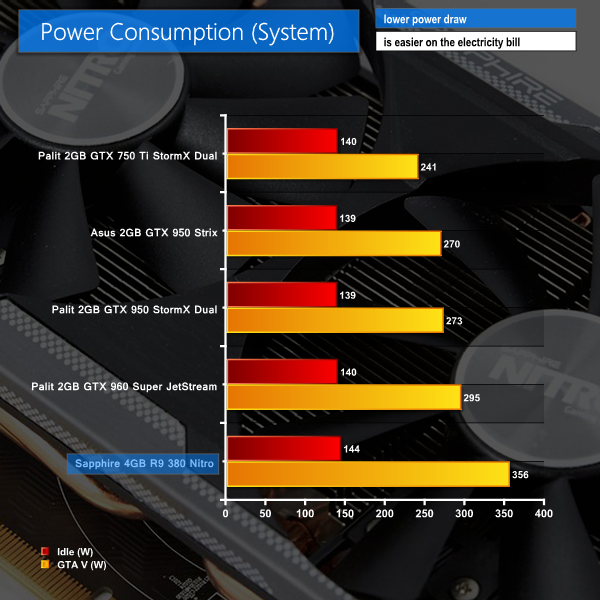
Not much of a shock to anyone at this stage – the AMD hardware demands a lot more power at the socket – around 60 watts more under load than the overclocked GTX960. The TDP differences between AMD R9 380 and Nvidia's GTX960 already pointed to this outcome.
We know that the R9 380 GPU has more headroom in it than reference or board partner speeds would suggest, so we pushed to see how far we could overclock Sapphire's R9 380 Nitro 4GB card.
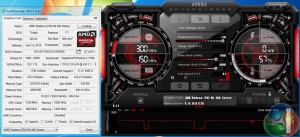
We managed to push the core to 1,100mhz before artifacting would occur. Memory speed was bumped up to 1600MHz (6.4Gbps effective).
Performance gains of around 10% were achieved in 3DMark's graphics score and the average GTA V frame rate at 1440P.
This actually makes GTA V more playable at 1440P, although a slight reduction in image quality settings would help to further improve frame rates and enhance the gaming experience.
The Sapphire R9 380 Nitro 4GB is a good mid-range graphics card that doesn't break the bank and offers comfortable 1920×1080 gaming performance.
Sapphire's twin-fan Nitro cooler is a well-designed model that effectively cools the GPU core. Attention is also paid to cooling of the card's power-switching MOSFETs, which is always good to see on a mid-range graphics card. I would, however, have liked to see a low-cost backplate deployed by Sapphire.
Backplates very rarely get used on cards below the higher-end performance scale, but our thermal imaging photos show how a low-cost, heat-spreading backplate would help to mitigate hotspots behind the VRM area. This backplate design could be very simple (a sheet of metal with some thermal pads) and could be implemented without noticeable addition to the cost.
The noise levels were perfectly tolerable (in our unfortunately loud testing environment), even whilst gaming. Sapphire implements a 0dB fan mode for times of low GPU load, even if the Antigua Pro (formerly Tonga) graphics core is not particularly well optimised for such operation judging by the high idle GPU temperature.
Performance of the Sapphire R9 380 Nitro 4GB is roughly on par with a factory-overclocked GTX960, 4GB models of which retail for a similar price to the AMD-based offering. Our R9 380 Nitro sample allowed a quick-and-easy overclock to be tuned in, netting a straightforward performance boost of around 10%.
Power consumption is a clear weakness for the R9 380 and its ageing GPU core. Whilst gaming, the R9 380 consumed around 60W more power than a GTX960. It's not only the electricity bill that suffers from increased power draw, but also the temperature inside your chassis and gaming room, as well as the effort required by a card's cooler.
Priced at £179.99 from OverclockersUK, the Sapphire R9 380 Nitro 4GB is a solid option that delivers compelling 1080P performance for the price, and decent 1440P numbers with reduced image quality settings. The similarly-priced GTX960 solutions are competitive alternatives, so the purchasing decision boils down to varied aspects such as the games you play, FreeSync or G-Sync support, and possible multi-GPU options with your motherboard.
Discuss on our Facebook page, over HERE.
Pros:
- Strong 1920×1080 frame rates and decent 1440P results with reduced IQ settings.
- Sapphire's twin-fan Nitro cooler does a good job and is quiet.
- Supports a 0dB fan mode.
- Understated colour scheme and overall design.
- 4GB VRAM is plenty for games such as GTA V and Shadow of Mordor at 1080P and 1440P.
Cons:
- High power consumption from the R9 380 GPU.
- A low-cost backplate would help spread heat across the rear PCB surface (away from the VRM).
KitGuru says: Sapphire's R9 380 Nitro 4GB is a smart option for delivering playable frame rates in a quiet, well-cooled package.
 KitGuru KitGuru.net – Tech News | Hardware News | Hardware Reviews | IOS | Mobile | Gaming | Graphics Cards
KitGuru KitGuru.net – Tech News | Hardware News | Hardware Reviews | IOS | Mobile | Gaming | Graphics Cards
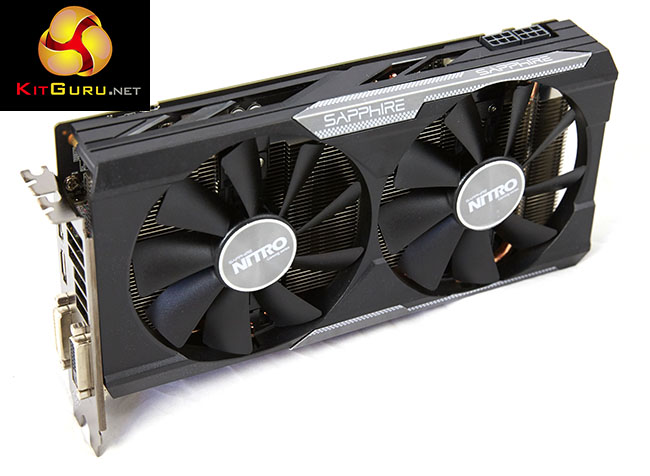
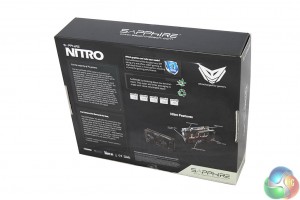
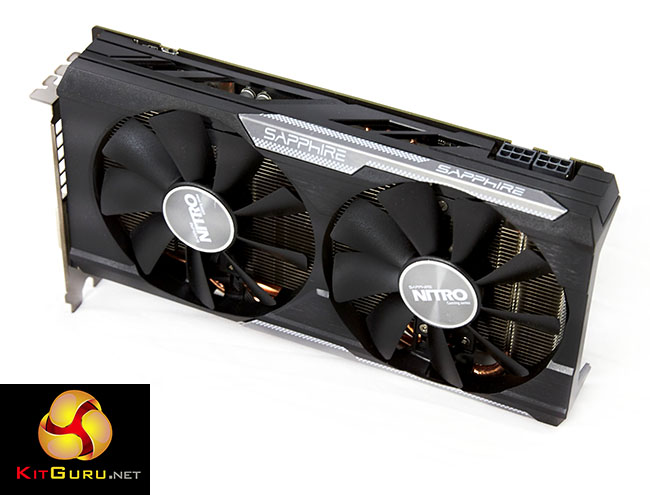
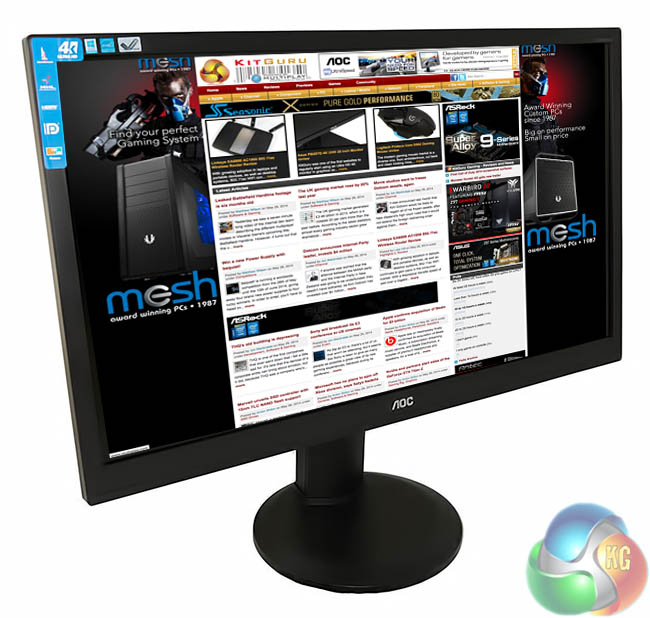
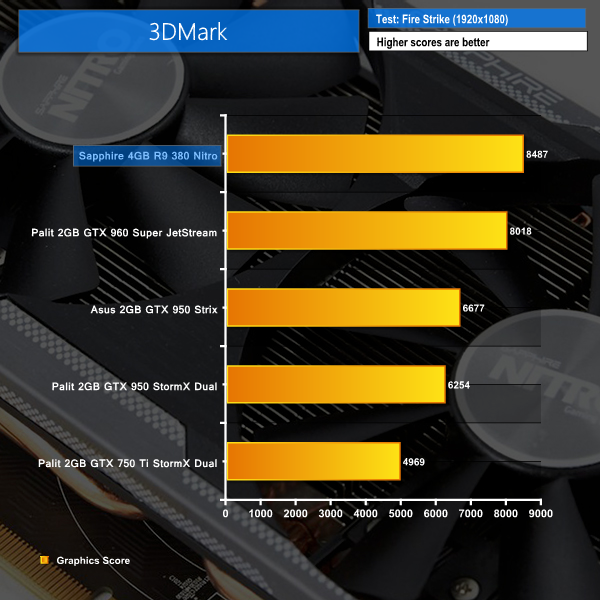
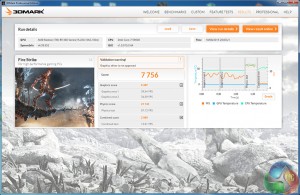
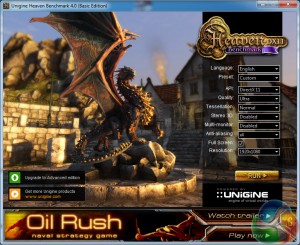
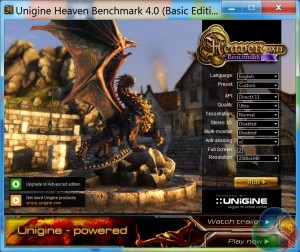
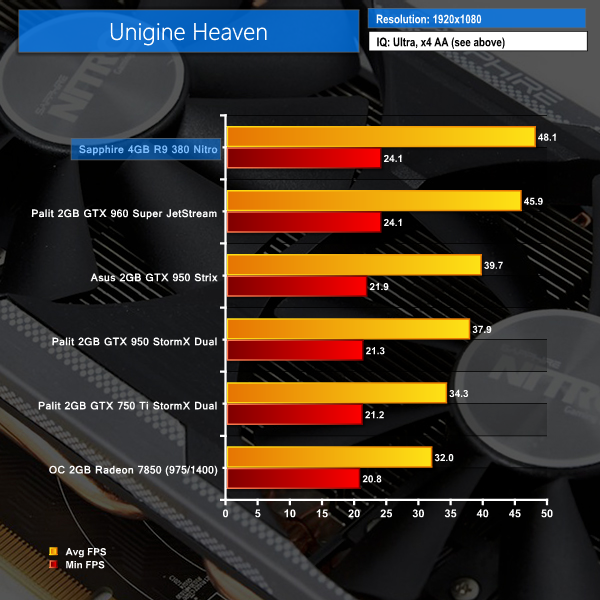
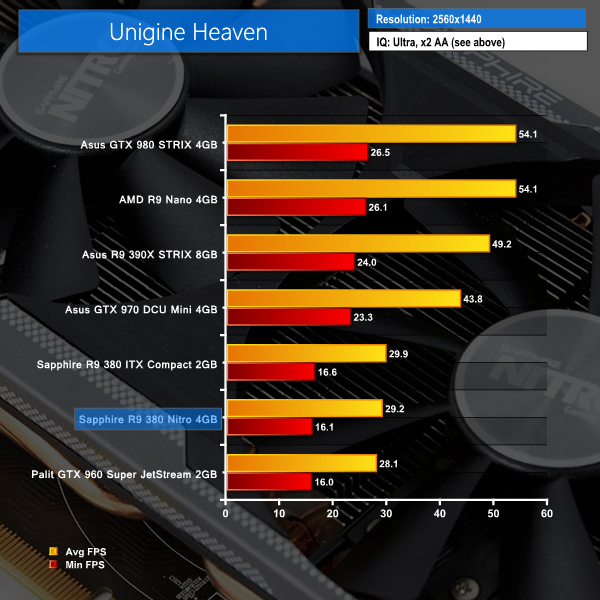
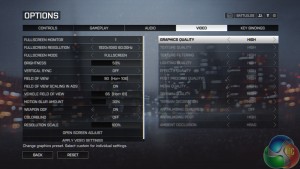
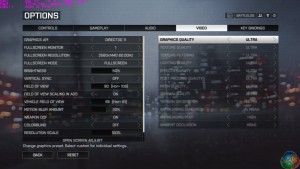
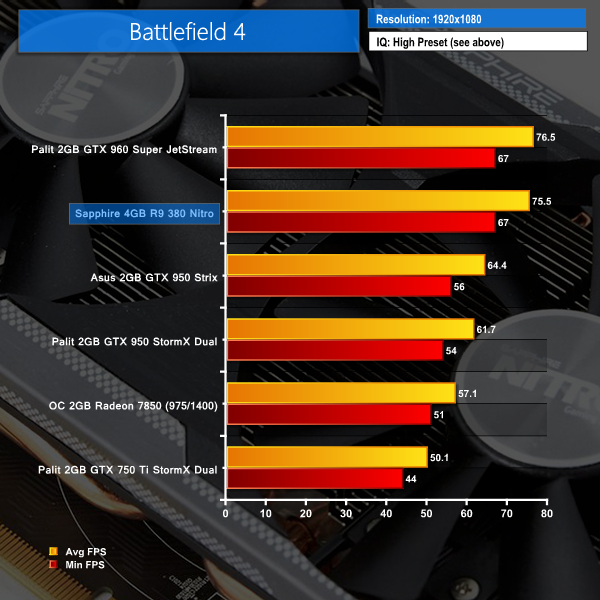
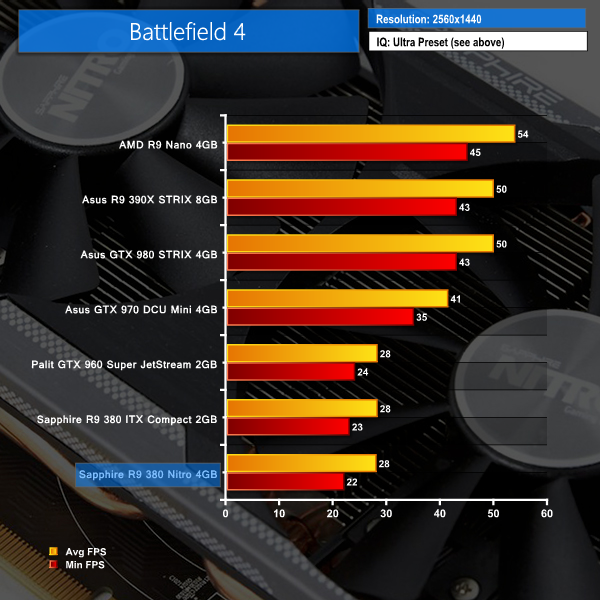
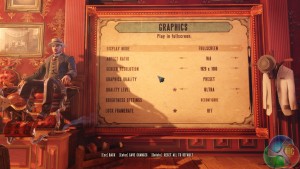
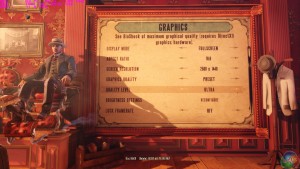
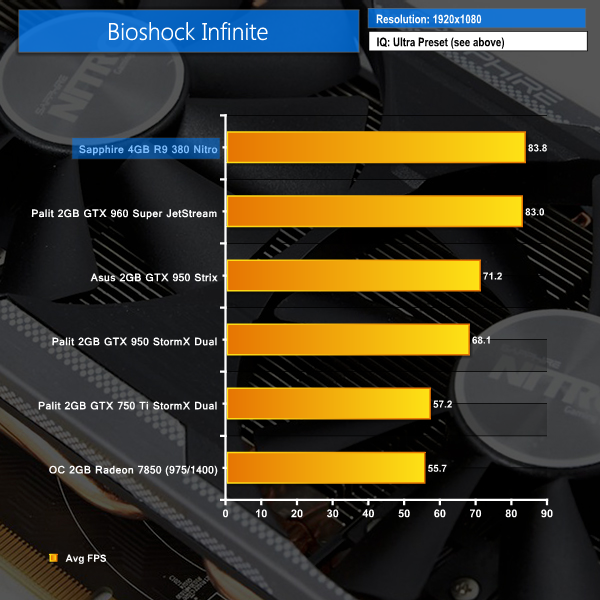
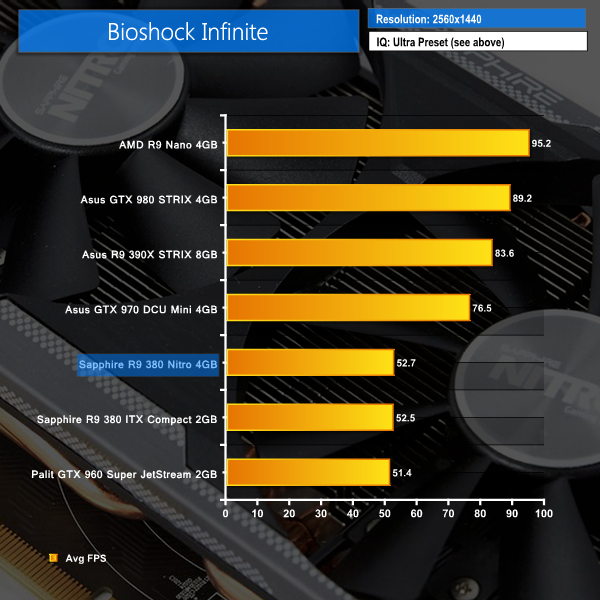
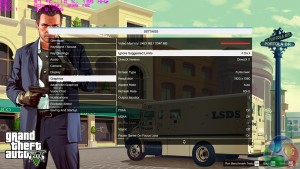
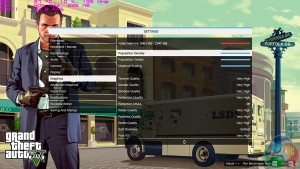
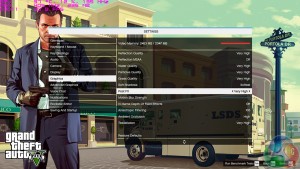
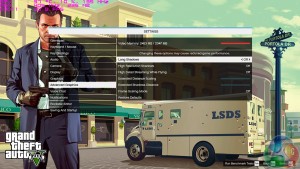
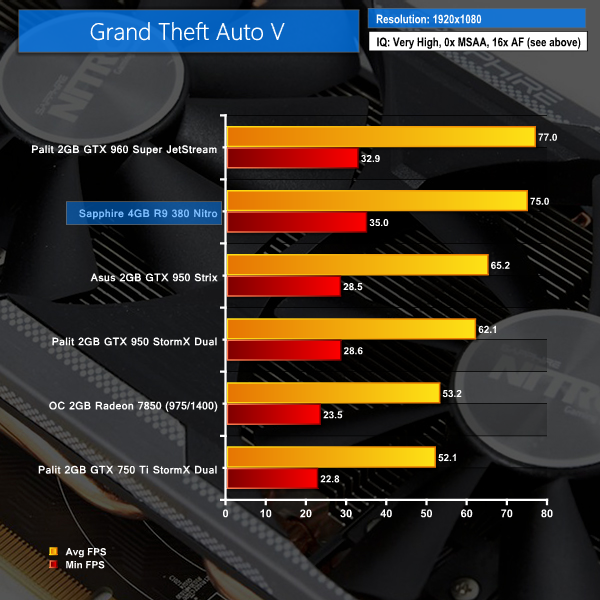
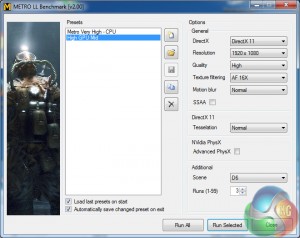
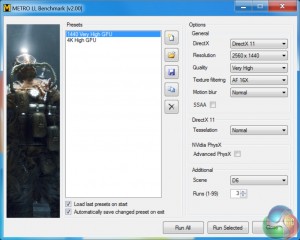
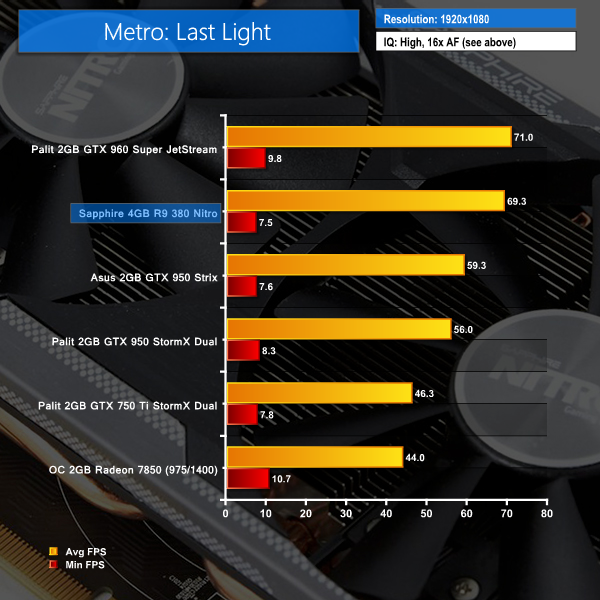
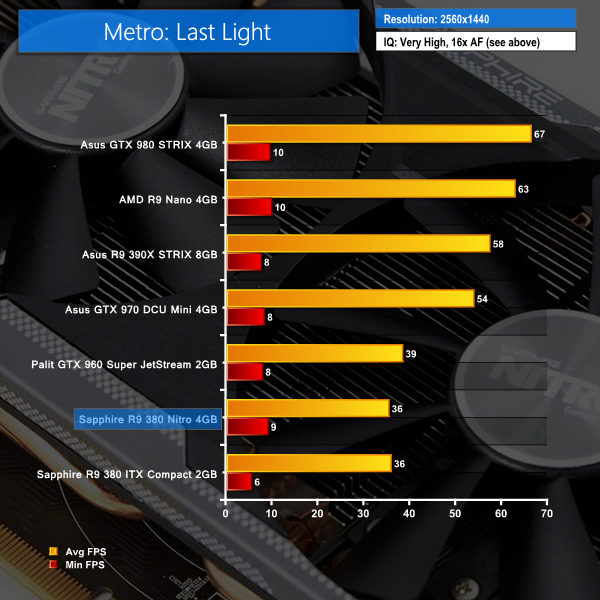


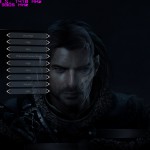
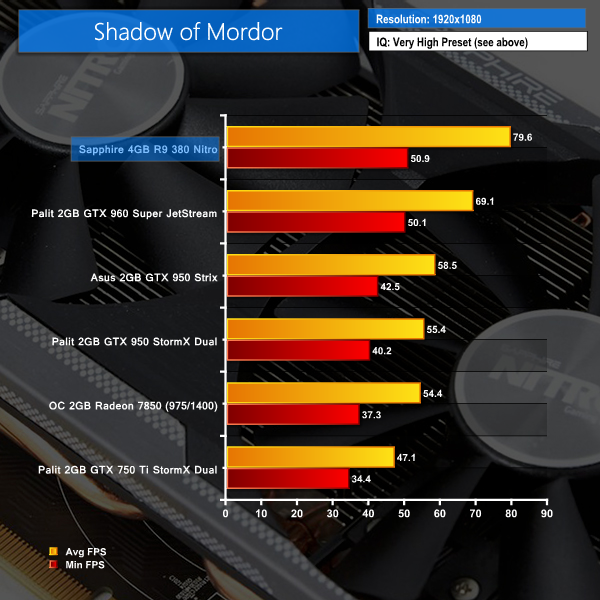
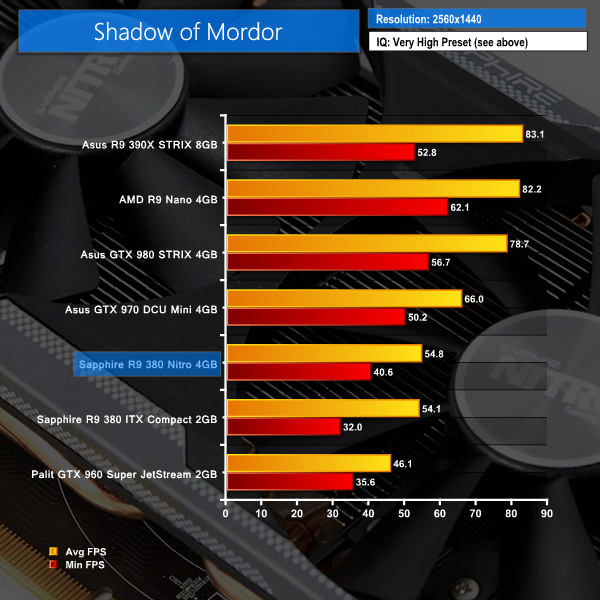
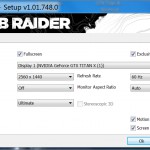
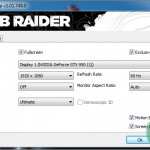
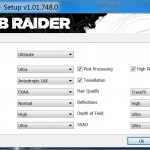

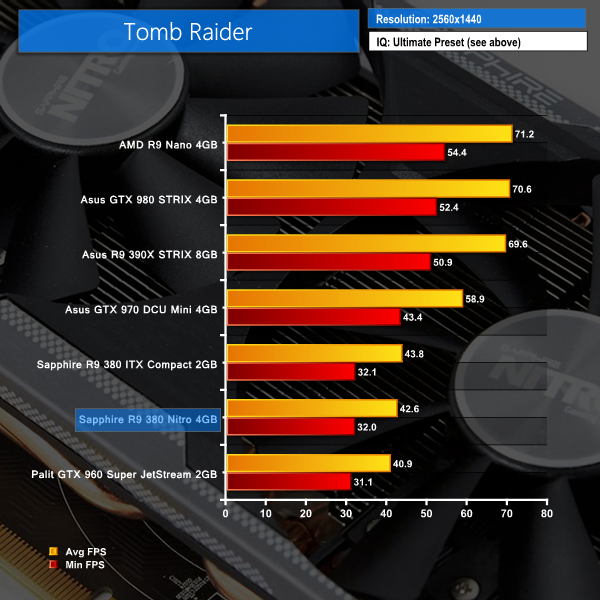
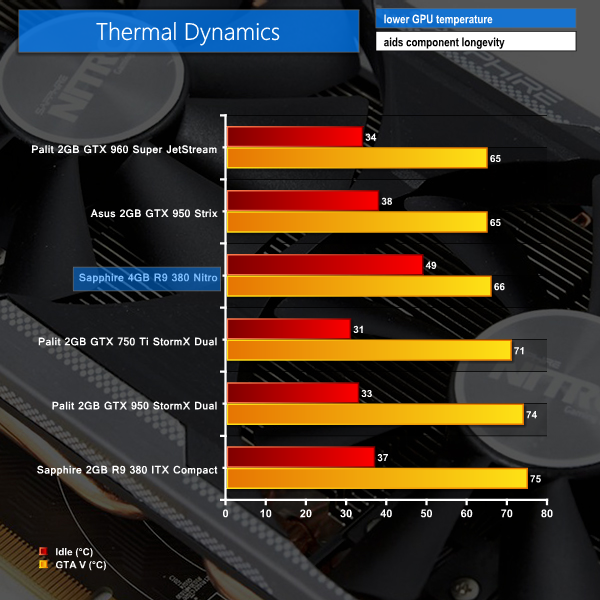
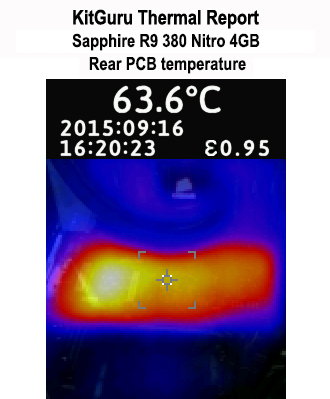
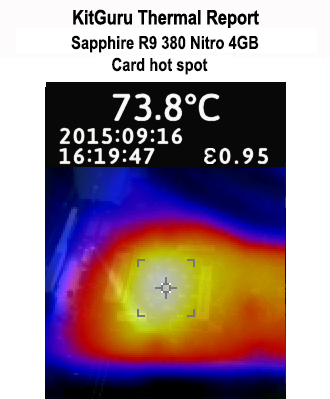
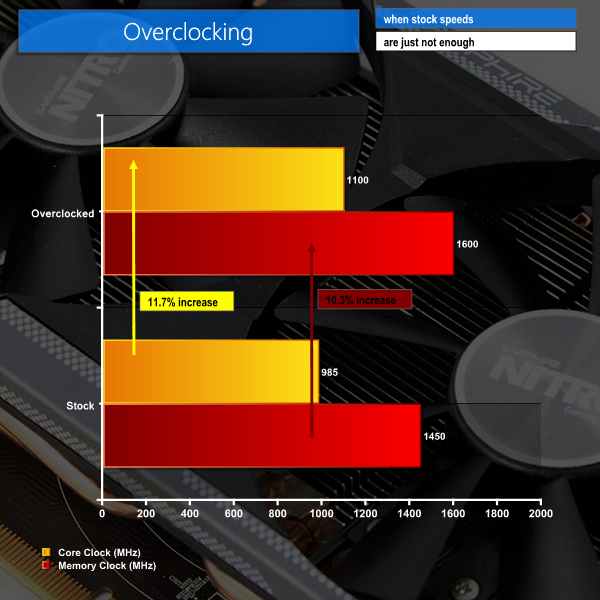
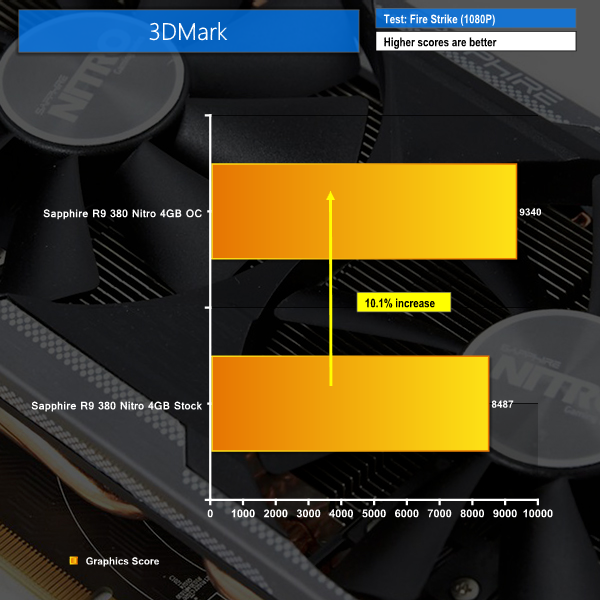
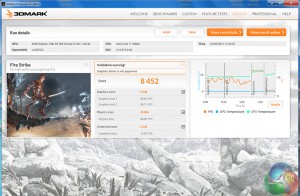
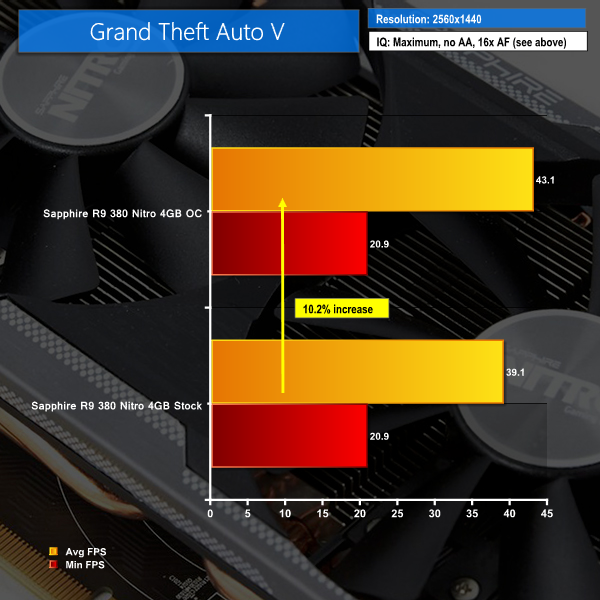



Can you try to make a CF (4GB) review?
my associate’s stride close relative makes $98 an hour on the portable workstation……….Afterg an average of 19952 Dollars monthly,I’m finally getting 97 Dollars an hour,just working 4-5 hours daily online.….. Weekly paycheck… Bonus opportunities…earn upto $16k to $19k /a month… Just few hours of your free time, any kind of computer, elementary understanding of web and stable connection is what is required…….HERE I STARTED…look over here
—-hs…….a
➤➤➤➤ http://GoogleTopTrendingJobsNetworkOnlineCenters/$98hourlywork…. =★★★★★★★★★★★★★★★★★★★★★★★★★★★★★★★★★★
To add perspective, this 380 was up against a 3-Slot Über OC Palit GTX 960 Super Jetstream 2Gb, and this even with cost disparity of being a 4G unit is just £4 more right today. I see a good purchase or a high priced 960!
Considering the Palit GTX 960 Super Jetstream 2Gb you tested back Feb ’15 only provided 6% more OC it’s fairly spent in what it can provide in more FpS. Also, for the 3-Slot Palit cooler and Maxwell efficacy, the Nitro cooler is offering excellent cooling under gaming, even with the Palit having a big chunk of its cooler hanging out in the clear through flow air, because of it’s short PCB.
As they stand they’re close competitors, but when the Sapphire Nitro truly pedestrian, while hardly any huge factory OC (985MHz) version. I say it held up excellent against what is one of the “preeminent 960” offered… which anymore seems overpriced. Perhaps a more proper vying would be something like XFX Black 380 4G with a 1030MHz, that would give a clear picture of what are the “ultimate versions” from either side.
Hello! I have just received my r9 380 4g. Didn’t expect thechanges from the review product… The version I have received now have 1010 Mhz default core clock. And an unexpected backplate. Yes a backplate that looks similar to the r9 390 version. Plus a free Dirt 3 game. Although I was wondering, r9 380 is under Gold Reward group which was listed as to receive 3 games but I only got 1. (Is this only for reference cards? see AMD Never Settle Promo).
Anyway Photos of the backplate could be seen at the link below.
https://dl.dropboxusercontent.com/u/12208225/20151029_211102.jpg
https://dl.dropboxusercontent.com/u/12208225/20151029_212041.jpg
A great deal anyway! Thanks AMD and Sapphire!
It deems Sapphire started to supply all the 300 series with Backplates now. And they have a nice design to them too, like yours.
IMO, these little things make the 380 worth every penny.